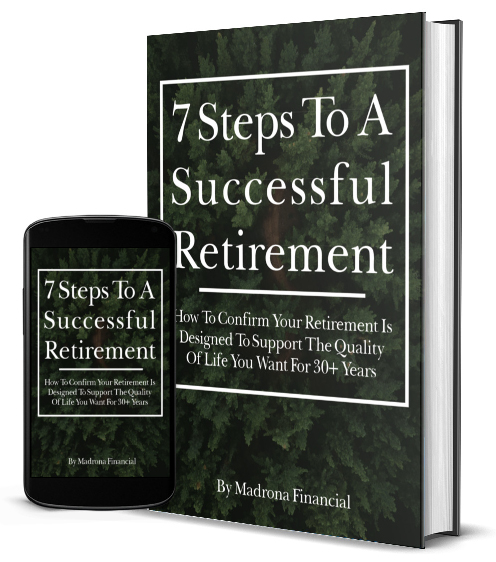
Life insurance is a confusing concept for many of our clients. The confusion starts with the name “life” insurance because these policies don’t pay out their benefit until someone is dead. The marketing and advertising people probably got it right though, because “death insurance” isn’t a very marketable term!
In our experience, we have found that life insurance isn’t something every person needs. It is generally a good idea to insure your life when you have dependents, or when the loss of your income may be financially devastating to someone else.
For someone without heirs, an older and financially-secure couple, or for a college student, it is seldom necessary. There are those who would argue that getting a very small term policy on a dependent child makes sense, if for no better reason that to preserve insurability for when they do take on responsibilities. In these cases, we recommend no more than is required to cover the insured child’s burial expenses.
TERM INSURANCE
Basic life insurance is called “term insurance.” This is by far the cheapest of all policies because it just pays a death benefit and rarely has any other features.
A potential problem with term insurance is that you typically can purchase it only for a set term of years. Let’s say you are 30 years old, and you have young children. You may purchase an inexpensive term policy for a term of 30 years to help in the case of your early passing, before your family can support itself.
In our experience, life insurance makes sense for folks who have dependents who cannot support themselves. Young families come to mind as well as families with one breadwinner and insufficient savings and investments to support the family in the event the breadwinner dies prematurely. Buying a 30-year term policy at age 30 will get most families through the time when they are at greatest risk of premature death. Once the policy expires, you might be able to qualify for another term policy, but the cost of a policy for a 60-year-old will be substantial.
With each passing year, the cost of insurance increases, so we recommend getting a policy with a fixed premium for the term of the policy, which can be as few as five years and greater than 30 years, as in the example above. Some policies come with provisions to renew the term policy at predetermined rates, and these policies will cost more than those without such guarantees.
PERMANENT INSURANCE
It’s easy to think of life insurance products as being either term or permanent. There are lots of products called lots of different names that are permanent life insurance. If you encounter policies with names like whole life, universal life, variable life, indexed universal life, etc., these policies can be many times the cost of a term insurance policy. When you break them down, they will resemble the combination of a lifetime term policy along with an investment component.
The investment component depends on the policy type:
* A whole life policy is analogous to term insurance plus a fixed annuity
* A variable life policy is analogous to term insurance plus a variable annuity
* Indexed universal life is somewhat like term insurance plus an indexed annuity
As you age, the cost of insurance in your policy can increase dramatically, as we said earlier. If you are paying a fixed premium on a form of permanent insurance, and the death benefit does not change, then over time you are decreasing your investment value in the policy.
Before you buy permanent insurance, make sure to understand your reasons for doing so. Insurance can be an important estate planning tool, but if you are really only looking for good investments as well as life insurance for a certain period of time, then you may want to consider a term policy while investing outside of permanent insurance.
Beware the zealous sales person. Most insurance agents want you to buy permanent insurance, not term. Why is this? Follow the money: commissions on term policies are lower than those on permanent policies. If you decide to go with a policy that combines a death benefit with insurance features, know why you are combining the two. It doesn’t always make sense to do so.
FIXED-INDEX ANNUITIES
Where does someone go to earn reasonable returns without taking on excessive risk? One answer lies outside of Wall Street, but instead with an insurance company product.
Here is an example of someone who went in that direction. Betty was traumatized by the market crash in the early 2000s and wanted some real protection of her principal. She purchased a fixed-index annuity and opted for the crediting method called the “annual point-to-point tied to the S&P 500 Index” on July 1, 2008 for $100,000. Note that date.
This product measures the change in the S&P 500 from the date of purchase until one year later and she receives that percentage change, but with two exceptions. First, she has a floor of 0% and a ceiling of 6% in this example.
The market crashed three months after she bought the policy. So the first year, the market decline means the value of her account stayed at $100,000. In the years following, if the S&P gained 4%, she would get the 4%. If it gained 14% she is capped at 6%, and receives that. This particular example assumes she doesn’t cash this investment out in the first seven years. Otherwise a surrender penalty would apply.
So Betty gets to receive some market returns, will never lose value and brags to her friends that she did just fine in the crash of 2008!
This type of investment is becoming very popular due to low CD and money market returns currently. It is also quite popular for a percentage of retirees’ portfolios since the product cannot lose value in a particular year.
Fixed index annuities, like all insurance company products, carry some degree of risk, but less risk than the products of most other financial institutions. The odds of insurer insolvency occurring is historically very slim. Additionally, the chances of a policyholder “losing it all” in such a scenario even slimmer, given the numerous and robust regulatory back-stops to insurer insolvency.
“It’s very, very rare for a life insurer to become insolvent,” says Michael Barry, spokesman for the Insurance Information Institute, an industry trade group. “Life insurers are among the best capitalized insurance companies out there.”16
Indeed, just 80 multi-state life and health insurers and 326 single-state or regional insurers have failed over the past four decades. Life insurers performed particularly well during the recent recession, with just eight insolvencies between 2008 and 2012. Not only did those companies’ combined liability of $900 million pale in comparison to the $639 billion Lehman Brothers bankruptcy, most policyholders recovered all or nearly all benefits under contract.
If the insurance company issuing the policy fails, the policy holder must rely on external guarantees. Most states have an insurance guarantee fund for payouts in the case of an insurance company policy. They differ from state to state. The policy will only mitigate your loss, not make you whole. In California, for example, an insurance policy or annuity owner will receive 80% of any one policy up to $250,000.
Therefore, on a $400,000 policy the most you would get is 80%, with a per person maximum of $300,000.
One of these guarantees exists in my home state of Washington. Generally, policies are insured by the Tate Guarantee Fund for up to $500,000 per company. In any case, make sure you are invested with a highly rated insurance carrier. We recommend following the ratings of A.M. Best and not purchasing a policy rated below B+.
16“Help! My life insurance company went broke,” BankRate.com, last accessed January 12, 2015. https://www.bankrate.com/finance/insurance/life-insurance-company-went-broke.aspx

